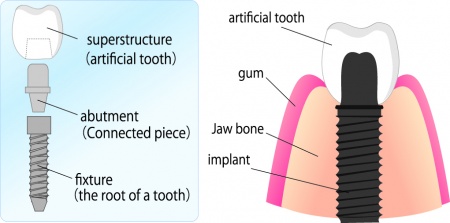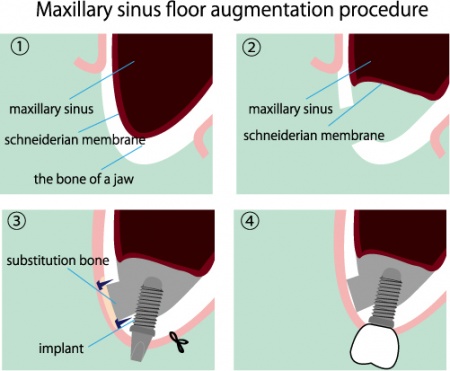Dental Implants

Dental implants are a common solution for patients with a missing tooth or teeth.
As well as improving your appearance and making you feel more confident, dental implants can improve the way you eat and can stop adjacent teeth from becoming crooked – otherwise teeth are prone to move to fill the gap.
A dental implant comes in two parts: a titanium screw or cylinder that is affixed to the jaw bone, and a porcelain crown that is placed on top. Implants can also be used to support a denture or a bridge.
Dental implants can often be placed at the same time as an existing tooth is removed. The cylinder or screw is precisely positioned on the jaw bone to create an instant stability. This stability will increase over time as the bone grows around the metal.
If you have just one missing tooth, you will just need one implant fitted. If you have several missing teeth, you will not necessarily need the exact same number of implants as teeth to be fitted – one implant can often support several replacement teeth. The number of implants you will need varies from patient to patient and depends on how much bone you have and how able it is to support the implants. As a rule the bottom jaw is usually denser and stronger than the upper jaw, so even if you need all your teeth replaced, you may need fewer implants on the lower jaw.
The success rate of dental implants is high – more than 90% - although smoking can reduce the success of implants and affect the initial healing process. Like regular teeth, the success of dental implants relies on a good oral hygiene regime. They require regular brushing and flossing, as well as regular visits to the practice for a check-up.
Sinus lift
 Before an implant can be placed, some patients will require surgical preparation in the upper jaw to ensure there is enough bone tissue into which the implant can be secured.
Before an implant can be placed, some patients will require surgical preparation in the upper jaw to ensure there is enough bone tissue into which the implant can be secured.
When the upper jaw has had no teeth for some time, the bone and surrounding tissues begin to disappear. If this occurs, there may not be sufficient levels of dense bone to place an implant. Fortunately, science has advanced a great deal in this area and one solution is to perform a sinus lift.
A sinus lift is an oral surgical procedure that extends into the sinus cavity above the jaw and packs bone graft material into this space. This graft material will be incorporated by the surrounding bone and form a solid structure very similar to bone. After a waiting period, the site will be checked and once an adequate bone density level is achieved your implant will be ready to be placed.

